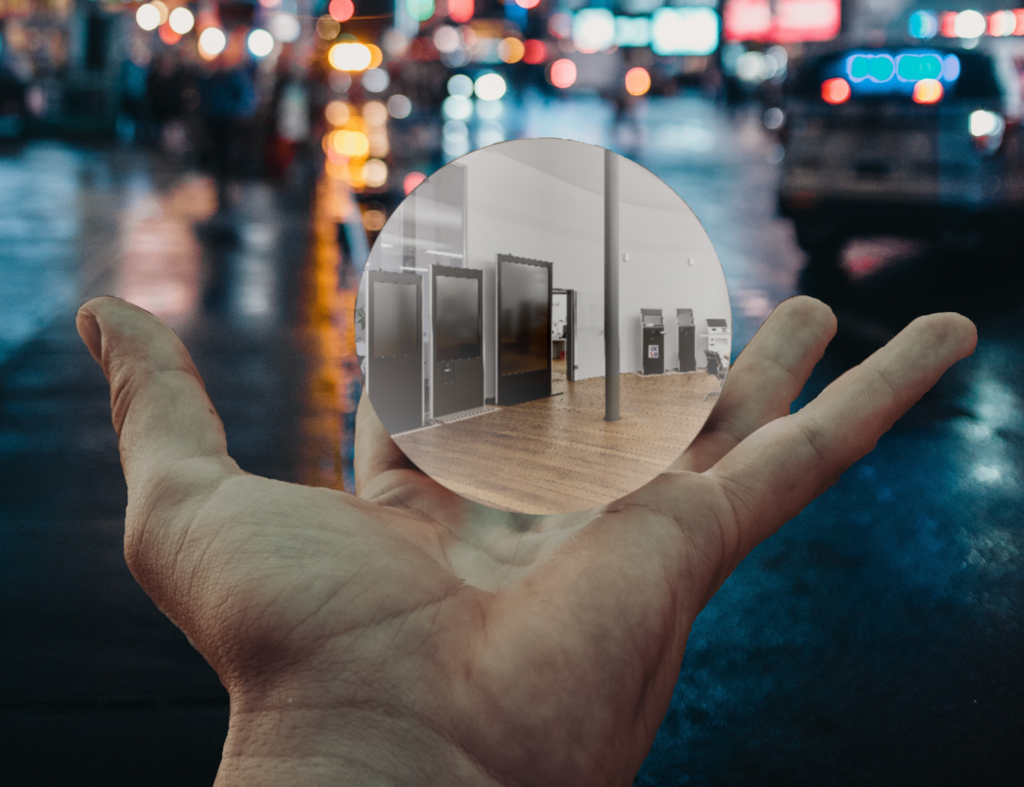What is the next step with Digital Signage?

Near future
A few weeks ago we saw the introduction of kiosk-like displays with integrated sensors, built for a world in crisis. These systems are equipped with temperature sensors and real-time distance measurement. Digital signage is proving to be the perfect tool for capturing indoor occupancy data – an important aspect of compliance with local government regulations and guidelines. In addition, mobile phones are becoming a kind of remote control for digital billboards. A technology that has been around for some time, but whose importance is only now being recognised. A smartphone can do more than just contactless payment.
After several months of shutdown, countries are preparing for a slow de-escalation of the situation and are gradually opening up shops. Nations that have been hit more severely by the crisis may have to wait longer before products can once again be sold over the physical counter. In some shops, this could lead to Black-Friday-like conditions with large rushes. How can this be managed? Arranged appointments in the store or improving the Buy and Collect Experience? It is clear that the security aspect will determine the buying experience.
What will be new?
Due to lower occupancy rates and the expected legal framework for use, digital signage screens will play a more comprehensive role than just displaying promotions and menus.
As already mentioned, mobile integration will play a greater role in shopping experience. Future reality will move from touch interactivity to voice, gestures and haptics. As technologies evolve, customers are likely to spend less time in the store, so the digital signage industry must seek to maximize the onsite shopping experience. IoT and data analysis will become more integrated, with masses of data to be analyzed coming from different sources. Not a new innovation in itself, but never before has this been implemented on a large scale.
Corporate communications is another potential area of high growth. While most companies are thinking about how to use their rooms in this new normality, digital signage is increasingly applied to display room occupancy or health indicators.
It is impossible to predict exactly how things will continue. However, in every crisis, new ideas, strengthened companies and innovative products emerge, which is why one can look optimistically into the future of the digital signage industry.
Near future
A few weeks ago we saw the introduction of kiosk-like displays with integrated sensors, built for a world in crisis. These systems are equipped with temperature sensors and real-time distance measurement. Digital signage is proving to be the perfect tool for capturing indoor occupancy data – an important aspect of compliance with local government regulations and guidelines. In addition, mobile phones are becoming a kind of remote control for digital billboards. A technology that has been around for some time, but whose importance is only now being recognised. A smartphone can do more than just contactless payment.
After several months of shutdown, countries are preparing for a slow de-escalation of the situation and are gradually opening up shops. Nations that have been hit more severely by the crisis may have to wait longer before products can once again be sold over the physical counter. In some shops, this could lead to Black-Friday-like conditions with large rushes. How can this be managed? Arranged appointments in the store or improving the Buy and Collect Experience? It is clear that the security aspect will determine the buying experience.
What will be new?
Due to lower occupancy rates and the expected legal framework for use, digital signage screens will play a more comprehensive role than just displaying promotions and menus.
As already mentioned, mobile integration will play a greater role in shopping experience. Future reality will move from touch interactivity to voice, gestures and haptics. As technologies evolve, customers are likely to spend less time in the store, so the digital signage industry must seek to maximize the onsite shopping experience. IoT and data analysis will become more integrated, with masses of data to be analyzed coming from different sources. Not a new innovation in itself, but never before has this been implemented on a large scale.
Corporate communications is another potential area of high growth. While most companies are thinking about how to use their rooms in this new normality, digital signage is increasingly applied to display room occupancy or health indicators.
It is impossible to predict exactly how things will continue. However, in every crisis, new ideas, strengthened companies and innovative products emerge, which is why one can look optimistically into the future of the digital signage industry.